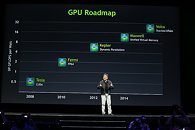Digital Storm Also Offering NVIDIA's GTX 750 (Ti) and GTX TITAN Black Cards
Digital Storm is excited to offer NVIDIA's highly anticipated GTX 750 and GTX 750Ti mainstream graphics cards and NVIDIA's new flagship TITAN BLACK - the fastest graphics card in the world. The three cards all allow Digital Storm customers to take their gaming to the next level with HD gaming at 1080P and Ultra HD 4K gaming respectively.
"HD gaming is the new standard and Ultra HD is not far behind with 4K displays already available for $800," said Rajeev Kuruppu, Digital Storm's Director of Product Development. "This is an exciting time for gamers and we're thrilled to incorporate NVIDIA's new cards into our systems to deliver the stunning graphics and advanced gaming experience our customers demand."
"HD gaming is the new standard and Ultra HD is not far behind with 4K displays already available for $800," said Rajeev Kuruppu, Digital Storm's Director of Product Development. "This is an exciting time for gamers and we're thrilled to incorporate NVIDIA's new cards into our systems to deliver the stunning graphics and advanced gaming experience our customers demand."
















